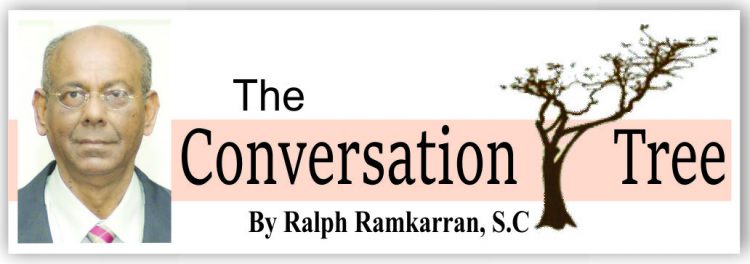
The issue of mining and Chinese Landing began when Wayne Vieira lawfully obtained four mining permits 1998 and 2001 on lands owned by the Village Council. Vieira’s mining activities collided with the Amerindian Act which was passed in 2006. Section 48 provides that a miner must “obtain the consent of at least of two-thirds of those present and entitled to vote at a Village meeting.” It must be noted that under section 6 of the Mining Act “…all minerals within the lands of Guyana shall vest in the State.” Further, section 112 of the Mining Act and section 209 of the Mining Regulations prohibit Amerindians from taking any gold from land lawfully occupied as a claim. In the SN reports the spokespersons for Chinese Landing admitted to mining on the lands of Vieira’s mining permits. They are doing so illegally.
In 2010 the GGMC issued a “cease work order” (CWO) against Vieira on the ground that he did not have an agreement with the Chinese Landing Village Council as required by section 48 of the Amerindian Act. The High Court quashed the CWO on the ground that the mining permits were issued before the Amerindian Act was passed. The case went to the Court of Appeal, which reversed the decision of the High Court, as the Amerindian Act came into force in 2006. The CCJ held that a CWO cannot be invoked by GGMC to enforce a violation of a law other than the Mining Act. The violation in this case was of the Amerindian Act.
In 2015 the GGMC declined to renew Vieira’s mining permits on the same ground as above. Chief Justice Ian Chang, in the meantime, in the case of Daniel Dazell, had ruled that the holder of a prospecting permit, granted before the Amerindian Act came into force, is required to observe section 48 of the Mining Act when application for the renewal of the prospecting permit is made after the coming into force of the Amerindian Act. Wayne Vieira instituted proceedings to quash the decision of GGMC. Inexplicably, Chief Justice Chang ruled in favour of Vieira, contradicting his decision in Daniel Dazell, without stating any reason for doing so. The Court of Appeal upheld Chief Justice Chang’s decision but gave no written decision. It has to be assumed that the Court of Appeal agreed with Chief Justice Chang’s contradictory decision-making, without explanation. The case went no further.
In the above case Vieira gave affidavit and documentary evidence that he had made several good faith efforts to have an agreement with Chinese Landing officials. Even after the intervention by the Ministry of Amerindian Affairs and Prime Minister Sam Hinds, the Village Council would not sign an agreement for 6 percent royalty, a far higher figure than currently prevailed. Vieira complained that villagers were conducting unlawful mining activities on the lands comprising the mining permits. Without a security force and the cessation of illegal mining when news that GGMC officials are about to visit, GGMC was unable to stop illegal mining.
No one knows all the facts, hence the IAHCR’s request for investigation, now being resisted by Chinese Landing. But it is not difficult to imagine that what really may have happened is that information of the lucrative, illegal, mining carried out by some villagers from Chinese Landing spread far and wide and there has since been an invasion of illegal miners from outside the village which now threatens the illegal mining of Chinese Landing villagers.
If this is the case, it would be no surprise that the Chinese Landing Village Council objects to the stoppage of mining and the fact-finding mission that would expose illegal mining activities by villagers at Chinese Landing. If I am wrong, they should explain the reason for their objections.
It is not known whether the illegal mining by Chinese Landing villagers is benefitting the entire community or only the few miners. If not, the Chinese Landing Village Council sacrificed the income of the entire village from royalty which would have benefitted the community.
Full disclosure: I and my firm, Cameron & Shepherd, represented the GGMC in the court cases mentioned above. The views expressed here are mine and not those of GGMC or of Mr. Wayne Vieira.
(This column is reproduced with
permission from Ralph Ramkarran’s blog, www.conversationstree.gy)





